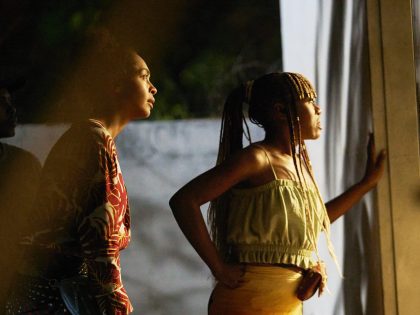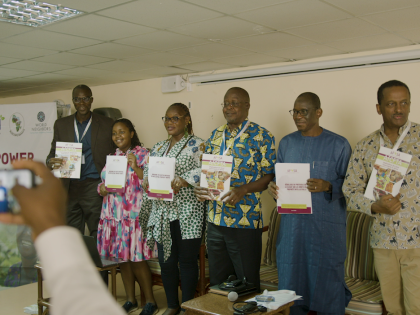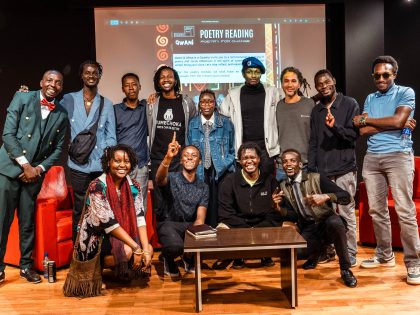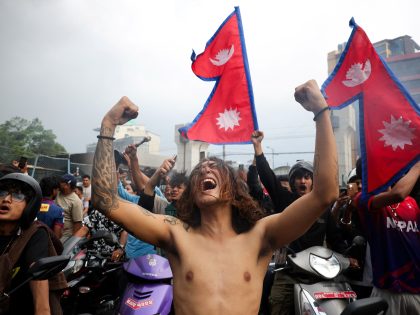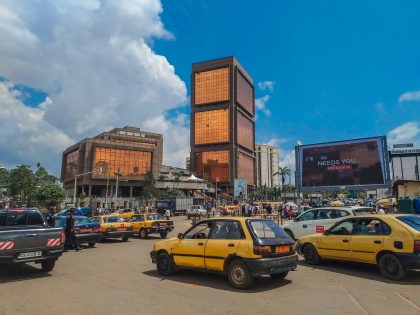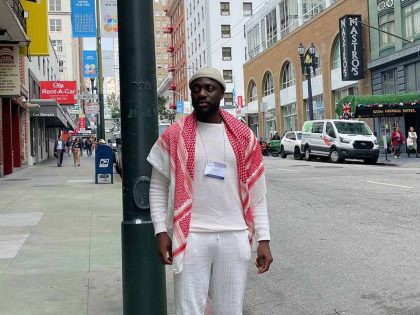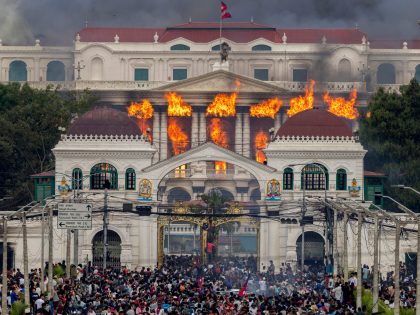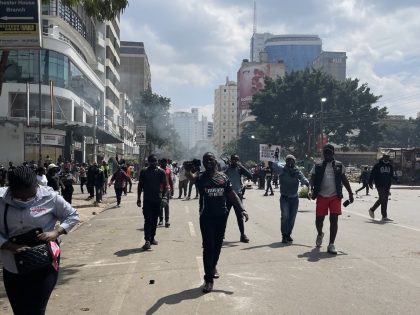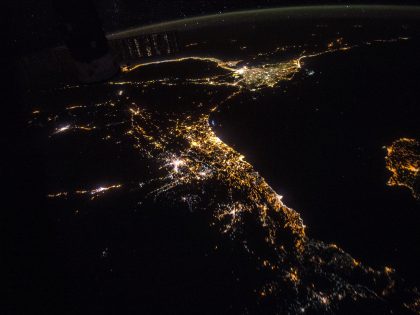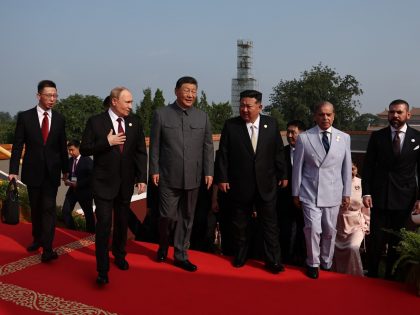Why is the cultural life of Black Panther so derivative?
In the Global North, Africa never inspires radically new terms of representation. It always presents itself as an entity grounded in an anthropological reality.

Wakanda is not a country in Africa, it is Africa. What this means is that Wakanda is not simply located in the center of Africa, as the map points out right at the start of Black Panther, but that it is shown to be a cumulative product of the entire African continent’s histories, politics, aesthetics, cultures and landscapes.
Afro-futurism is what emerges when we seek the meaning of the future in blackness. The form of utopian politics hard-wired into this view of the world is not hard to identify when we look at Black Panther, as well as at Nnedi Okorafor’s Lagoon and Who Fears Death, and Nisi Shawl’s Everfair. What these works have in common is the notion that the future of the globe depends on a becoming-black of the world. They situate global networks of black worlds as the center around which a new global or planetary order can be assembled.
Black Panther has left no stone unturned when it comes to incorporating the extraordinary geography that the continent is home to, as well as cultural elements such as clothing, hair, jewelry, body art and make-up. A Somali blogger beautifully deconstructed Black Panther’s fashion by illustrating the ways in which every single character’s look had been crafted in great detail based on painstaking and detailed research by Ruth Carter on various groups across the continent — Mursi lip plates from Ethiopia, hair woven with otijze paste in the style of Namibia’s Himba women, Kente scarves from Ghana and Basotho blankets from Lesotho, among dozens and dozens of such stunning details.
There is a kind of euphoria in seeing these appropriated, misrepresented and marginalized cultures come alive on the screen. But for us, it also raises some questions: If Wakanda is an isolated and hidden country that has successfully invented a dizzying array of technological implements and has a fiercely nationalist mentality, why have they not managed to generate their own unique culture? Why is it so easy, in spite of all the dressing up, to mistake Wakanda for Africa?
Why is Wakandan cultural life so devoid of its own, special brand of artifacts, fashion and language? In Wakanda, highly detailed and realistic renditions of ethno-aesthetic, sartorial elements from African countries geographically and culturally distant from each other co-exist despite Wakanda’s centuries long isolation from the rest of the continent, as well as the planet.
There are several reasons why Wakandan culture is so derivative.
Firstly, the Africa in Black Panther is all too familiar. Apart from the typical Hollywood futuristic gizmo, the world in the film is much too recognizable. Director and cowriter Ryan Coogler assembles a delightfully mixed bag of contemporary African iconographies touched up with the usual Hollywood futuristic sheen and tells us it is what a futuristic Africa looks like. But Wakanda is not futuristic enough. It is too rooted in an Africa we already know and inhabit and, thus, does not manage to really take flight into the imaginary.
At the end of Black Panther, T’Challa dreams of a new world order led by Wakanda. Like other global imaginaries built around blackness, his vision presupposes a tectonic power shift and a redrawing of the maps of global power. In a way, Black Panther exemplifies the ways in which Afro-futurism renders blackness as what is at stake in the future of the globe. And precisely for that reason, the utopian politics that are at the heart of the film are easy to grasp and endlessly exciting. But the same cannot be said for its aesthetics. What we find is that, while the film’s politics are beautifully utopian, its aesthetic is typically “anthropological.” The idea of Wakanda is radically utopian, but the formal way in which the film is designed is far from utopian.
In the Global North, Africa never seems to inspire radically new terms of representation. Africa always presents itself as an entity grounded in a kind of anthropological reality. That is why, in his attempt to imagine a futuristic Africa, Coogler is content to simply reproduce Africa as it exists. He forgets that Africa as the subject of art, and Africa as what is artistically represented, are two different things, and that the gap between the two is where the imagination can soar.
How is it that in a futuristic Africa, a Himba woman looks similar to how she appears in National Geographic magazine? In Coogler’s mind, as in the minds of many writers and artists, there is really no difference between the Himba woman as a ethnographic fact of the African world and the form in which she is artistically represented as a figure of the future. A truly utopian gesture would have been to be a bit more inventive. The fetish for “tribal” culture, nativism and indigeneity is also illustrated in the design elements for the all-female Wakandan warriors, known as Dora Milaje. Senior visual development illustrator Anthony Francisco said that these women’s look was inspired by a Filipino tribe called Ifuego.
More evidence of an archetypal anthropological imaginary are the bare-bodied duels on top of a waterfall, the long traditional ceremonies involving drinking panther blood, the making of life-giving potions with a mortar and pestle, the encounters with ancestors under the obligatory acacia tree, and the oddly herbal nature of vibranium. Oh yes, the glowing, throbbing purple vibranium is squeezed out of a really exotic African flower. The Jabari tribe, who exist autonomously in Wakanda and are also quite wealthy, have descended from gorillas and use barking as their war cry and decorate their palace with twine and twig art.
The essence of science fiction and fantasy is invention in its most radical sense. There is a distinct pleasure that comes from seeing familiar iconographies reinvented to the point of being unrecognizable. There is a place in fiction, a border point, where our knowledge of a place intersects with a completely reimagined version of that place. It is from this threshold that the futuristic derives its power, and it is this threshold that separates Wakanda from Africa. To let Wakanda fulfill its utopian function, we cannot allow it to coincide with Africa, which is what the movie does. It suggests that Wakanda is nothing but the sum total of Africa’s existing cultural artifacts and practices. A truly utopian aesthetic would remind us not to mistake Wakanda for Africa by maintaining a distance between the two, where something mindblowingly imaginative can take place. Even though we see Africa in Wakanda, it should be an Africa that is so completely re-imagined that it suspends everything we thought we knew of Africa.
But an ethnographically diverse, United Nations of Africa-type of scenario is what Wakandan culture seems to be about. The language being spoken is Xhosa, which is absurd because the Black Panther budget could surely have whipped up several linguistics experts to create a new Wakandan language for the scant number of scenes it’s spoken in. In the history of sci-fi/ fantasy, the invention of language has always been a generative element of world building. Think Tolkien’s Elvish, with its complete linguistic archive, or Dothraki in George R. R. Martin’s Game of Thrones. It would have been a real treat to hear Wakandans speak a whole new language, in part, because a utopian Africa on film deserves a new language. That would have been the futuristic thing to do.
Secondly, Wakanda is bizarrely and inexplicably postcolonial!
Wakandans seem to come armed with all kinds of intellectual discourse opposing colonialism. In postcolonial literature, authors will often write back against centuries of Western “othering” of colonized people and their culture. Several postcolonial novels will have white or European characters who are depicted as exotic or strange or comical, and their culture is mocked and rendered somewhat absurd. In Black Panther, plenty of othering jokes abound. Okoye says, “Guns, so primitive,” and Shuri gets the big laughs when she calls CIA Agent Ross a “colonizer.”
Why are Wakandas so fluent in a postcolonial comedic sensibility when they have never even experienced colonialism? Teaching white students in the West about the legacy of colonialism is like pulling teeth. There is neither empathy nor interest. In Wakanda, however, there is no one living with colonial conquest or its aftermaths. Why, then, do they sound so postcolonial? It seems that when Wakandans Netflix and chill, they are binging on Battle of Algiers and 12 Years a Slave. In their curriculum, there is perhaps an overload of Edward Said, Ngugi wa Thiong’o, Chinua Achebe and Paul Gilroy.
This oppositional postcolonial politics constantly reinforces existing stereotypes about Africa and Africans. Reversing the dynamics of others, rejecting racist or nativist stereotypes, is part of the comedic underlayer of Black Panther. Jabari threatens Agent Ross with cannibalism, and then bursts out laughing because Ross falls for it; Jabari then informs him that his kids are actually vegetarian. This is similar to Okoye using the word “primitive” to typecast the white world. By implanting these reversals, these lines only highlight and perform their presence. We weren’t really thinking of Wakanda or even Africans as being either primitive or cannibalistic, but suddenly the jokes circle around it, reminding us that, actually, these things are indeed still a cross to bear for Africans everywhere.
The truth is that Black Panther, at the end of day, emerges from a very American imagination. To the extent that it aims to express the natal rupture experienced by African-Americans and the perpetual legacy of traumatic uprooting that is brought upon them, Black Panther beautifully evokes it. It fills the heart to see the loss that an unmoored and orphaned Eric feels, and the sense of solidarity he has with his black brothers who continue to suffer worldwide. Cooger and team have been heavily criticized for depicting Eric as an aggressive, toxic, woman-murdering war veteran but the Wakandans have been depicted somewhat unfairly too, even though they stand in for a powerful African utopia that is meant to reshape the global black experience.
Africans are imagined in the most Western way possible in this film. Wakanda’s tribalist, isolationist, ethno-nationalist, lineage-obsessed mentality makes them insensitive and tone-deaf to the need for a true black solidarity. The long-standing rift between the Africans and the African-Americans has been raised to a fever pitch in the film. In a way, this insensitivity is blamed on the Wakandan’s old-school ways, an assertion that could have been mitigated and reframed had the utopia that is Wakanda been rooted in a less anthropological imaginary. It feels disappointing in the end to realize that, no matter how cerebral and illuminated the filmmakers are in terms of history and politics, they end up falling into the trap of showing us an Africa of the Western imagination.
Comic book adaptations continue to evolve and mature over time. Often, they completely reinvent their imagery and aesthetic approaches. We can only hope that the Black Panther franchise can fully embrace an Afro-futurist vision. Kodwo Eshun reminds us that not all science fiction is utopian. To be truly utopian, a narrative must move beyond simply re-assigning the present to a future time. For Black Panther, this would mean beginning from a utopian archive. It would mean fashioning a radically new African world from a backcloth that is itself utopian and not merely anthropologically available.
“Wakanda,” Lupita Nyongo says on the American TV talk show, The View, “is special because it was never colonized,” and thus “a reimagining of what could have been possible had Africa been allowed to realize itself for itself.” To push its utopian vision as far as Lupita’s comment suggests, Black Panther has to begin from an African world that has successfully rendered both the colonial experience and the postcolonial response to it superfluous.
That said, #WakandaForever? Absolutely!

